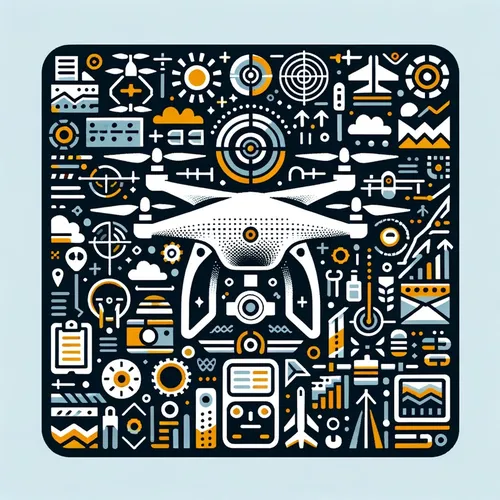Drones in 2025: Soaring Profits, Risky Skies, and AI Pilots Taking the Controls!
- Author
- Quiet. Please
- Published
- Fri 18 Jul 2025
- Episode Link
- https://www.spreaker.com/episode/drones-in-2025-soaring-profits-risky-skies-and-ai-pilots-taking-the-controls--67024769
This is you Professional Drone Pilot: Flight Tips & Industry Updates podcast.
Professional drone operators are entering an era defined by both innovation and opportunity. To stay ahead in 2025, commercial pilots, aerial photographers, and inspection specialists need to integrate advanced flight techniques, equipment optimization, business acumen, and regulatory awareness.
Mastering both manual and autonomous flight is now a baseline expectation. Advanced training enables pilots to respond with precision to complex environments, perform emergency maneuvers, and optimize flight paths for both safety and efficiency. Practicing maneuvers like smooth takeoffs, controlled hovering, and cinematic camera-gimbal coordination—as highlighted in recent tutorials—elevates video quality and mission success. Today’s drones increasingly feature AI-enhanced autonomy, making it vital to continually train with the latest waypoint programming and automated survey tools for optimal deployment in mapping, inspection, or media applications.
Equipment maintenance acts as a linchpin for operational reliability. Regular firmware updates, sensor recalibrations, and battery health checks prolong drone lifespan and reduce downtime. For maximum return on investment, drone pilots should also experiment with payload optimization: select imaging and sensor modules that best serve client needs, be it real estate, agriculture, or infrastructure.
The commercial drone market looks robust. According to TS2 Space, worldwide commercial drone revenues reached about 30 billion dollars in 2024 and are projected to grow over 10 percent annually, with specialized services now outpacing hardware sales. Sectors like construction, energy, logistics, and agriculture are embracing drones for site surveys, asset inspection, and aerial documentation. The rise of the Drone-as-a-Service model is letting more businesses access drone capabilities without major upfront investments, opening new opportunities for operators offering mapping, photogrammetry, or inventory audits.
Staying compliant is essential. The latest FAA updates emphasize mastery of airspace regulations, meteorology, and operational safety, with streamlined testing procedures for new and renewing Part 107 certificates. Markets outside the United States are similarly tightening standards, making certification and continuing education mutually necessary. Insurance remains a dynamic space, as policies increasingly tie premiums to pilot qualifications, mission types, and real-time risk assessment.
Weather is more than a checklist item; real-time forecasting and flight planning platforms are being integrated for rapid go/no-go decision-making, safeguarding assets and reducing liability. As drones frequently fly beyond the line of sight, insurers and clients demand robust risk management protocols.
Current headlines reveal that BVLOS—beyond visual line of sight—environments are opening up as regulatory frameworks mature, especially for deliveries and infrastructure surveys. Meanwhile, North America’s commercial drone market is expected to hit 26.9 billion dollars by 2033, and advances in AI-powered, fully autonomous drones are reshaping filming, logistics, and environmental monitoring.
For actionable steps, operators should: invest in advanced flight training for both manual and autonomous roles; implement routine fleet maintenance; explore service contracts with businesses newly adopting drone tech; and update insurance and certification status frequently. To optimize client relations, establish transparent pricing models based on project complexity, hours, and deliverables.
Looking forward, drone professionals should anticipate rapid shifts: increasing AI autonomy, diversified payloads, and growing demand for specialized drone services. Establish your expertise now to harness the vibrant opportunities ahead.
